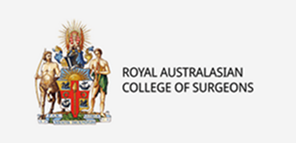- 0401 792 644

- 0401 792 644

The most common procedure is a total mastectomy, which involves removal of the entire breast including the nipple and surrounding skin. Breast-conserving surgery is generally not offered to men due to the small amount of breast tissue present. Mastectomy is typically accompanied by removal of lymph nodes from the armpit (axilla) to assess for cancer spread. A horizontal scar remains across the chest and some contour irregularity may be visible depending on the volume of breast tissue.
Lymph node surgery helps determine whether the cancer has spread beyond the breast and whether additional treatment such as radiotherapy or chemotherapy is needed. Sentinel node biopsy (SNB) involves removing one to three lymph nodes that are the most likely to contain cancer cells. These nodes are identified using a radioactive tracer and/or blue dye. If cancer is found in these nodes, a more extensive procedure known as axillary clearance, which removes all lymph nodes in the armpit, may be required. In some cases, the sentinel node is analysed during surgery using a frozen section.
Preparation may include blood tests, an ECG, a chest X-ray, and a review of your current medications. You will need to fast for six hours prior to surgery. Dr Noushi and the anaesthetist will guide you on which medications to stop or adjust, particularly if you are taking blood thinners, insulin, or herbal supplements. It is important to notify the team of any allergies, underlying heart or lung disease, or if you have needed antibiotics before dental procedures. Smoking can significantly increase the risk of wound healing issues, and quitting is strongly recommended. Patients are encouraged to shower the night before or the morning of surgery and to organise any assistance they may need at home post-operatively.
Most patients stay in hospital for one to three nights. A dissolving suture will be used to close the incision and a waterproof dressing applied. A soft plastic drain may be placed near the surgical site to collect fluid, and this will be managed by nursing staff during your hospital stay and after discharge if required. Showering is permitted with the dressing in place, but soaking or scrubbing the area should be avoided. A support binder or garment may be recommended to reduce swelling and provide comfort. Recovery varies, but most people can resume light activity within a few days. Full recovery may take several weeks depending on the extent of surgery and any additional treatment required.
Bruising and mild pain are common and usually resolve with simple pain relief. A fluid collection known as a seroma may occur under the wound; this can be drained painlessly in clinic if needed. The risk of wound infection is low but can usually be treated effectively with antibiotics. Some patients experience numbness or tingling around the scar or in the upper arm due to nerve irritation; this generally improves over time. Occasionally, patients notice small contour irregularities or tissue fullness near the scar, which usually improves but can be corrected with minor surgery if persistent.
After lymph node surgery, patients may experience shoulder stiffness or arm discomfort. These symptoms typically resolve with physiotherapy and exercises, which will be initiated soon after surgery. A condition known as lymphoedema, which causes swelling of the arm, occurs in a minority of patients who undergo full axillary clearance. Scarring, nerve sensitivity, and changes in skin colour from blue dye are other possible side effects. Blue or green discolouration of urine or stool is harmless and temporary. In cases where cancer is found in the sentinel node during surgery, a more extensive axillary clearance may be completed immediately to avoid a second procedure.
Pathology results from the surgery are reviewed by a multidisciplinary team and discussed with you during your follow-up appointment. These results are typically available within one week and will help guide whether further treatment is necessary, including potential endocrine therapy. Most male breast cancers are hormone receptor-positive. In such cases, endocrine therapy such as tamoxifen may be recommended to reduce the risk of recurrence. by a multidisciplinary team and discussed with you during your follow-up appointment. These results are typically available within one week and will help guide whether further treatment is necessary.
If you have any concerns or questions before or after surgery, please contact Dr Noushi’s rooms for support and further information.



